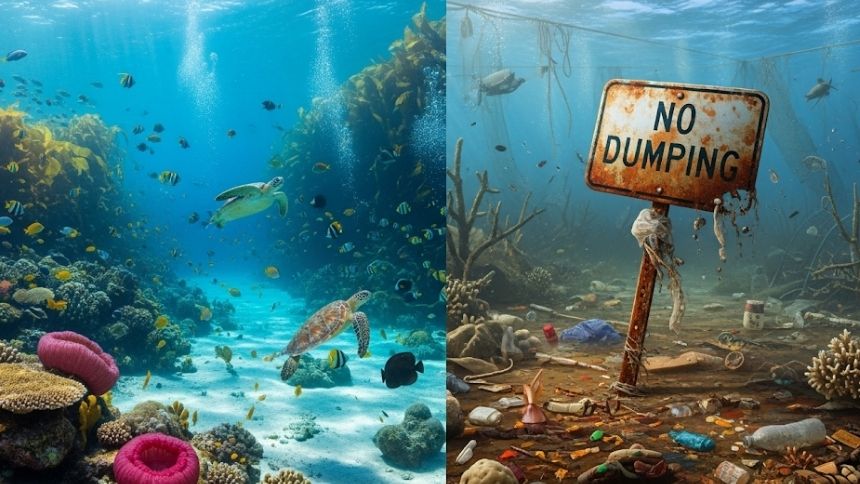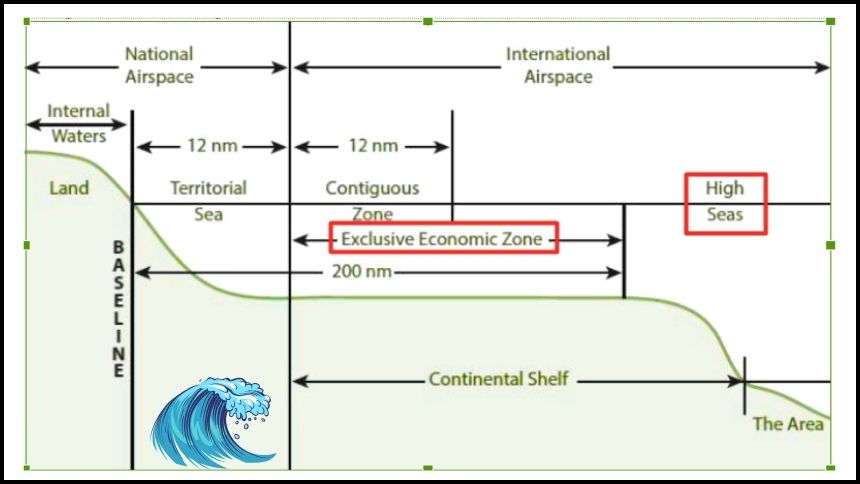The global effort to save our oceans is more critical today than ever before. However, experts are warning that without urgent, enforceable regulations, this well-intentioned push could backfire, causing more harm than good. Despite billions of dollars pledged over the last decade to protect marine ecosystems and tackle ocean pollution, major threats like overfishing, plastic pollution, climate change, and habitat destruction continue to worsen at alarming rates.

Currently, less than 9% of the world’s oceans are officially protected, and only about 2.7% are effectively managed with strong, enforceable rules that genuinely safeguard marine biodiversity. This stark gap between promises and real-world action poses a serious risk to ocean health — which is inseparably tied to life on Earth. This article breaks down the complex challenges facing ocean conservation, why it matters to everyone (from young students to professionals), and how coordinated global action can turn the tide.
The Global Push to Save Oceans Could Backfire Without Urgent Regulations
| Key Aspect | Data / Fact | Professional Insight |
|---|---|---|
| Total Ocean Protected | 8.4% protected, 2.7% effectively protected | Urgent need to improve enforcement and management |
| Annual Global Funding for Ocean Protection | $1.2 billion allocated vs. $15.8 billion needed annually | Massive funding gap threatens goal achievement |
| Major Treaties | BBNJ Agreement: 50 ratifications of 60 required for enforcement | Key for protecting high seas beyond national borders |
| Plastic Pollution | Estimated 75–199 million tons in oceans; 33 billion pounds added yearly | Urgent action required across society |
| Economic Benefits of 30% Ocean Protection | Could unlock $85 billion annually by 2050 | Strong economic incentive to invest in ocean health |
The global push to save our oceans holds extraordinary promise but also significant risks if urgent, coordinated, and enforceable action is not taken. Protecting ocean health requires robust international treaties like the BBNJ Agreement, dramatically increased funding, effective management practices, and inclusive governance that honors the voices of indigenous and local communities.
By understanding the current challenges and working together — governments, businesses, communities, and individuals alike — we can secure oceans that remain vibrant, resilient, and capable of supporting life, climate stability, and economies for generations to come.
Why Protecting the Ocean Matters
The ocean covers over 70% of our planet and is absolutely essential to life on Earth. It provides food, regulates the climate, produces oxygen, and supports millions of jobs worldwide. Yet human activities continue to degrade the ocean’s ability to deliver these vital services, including:
- Overfishing, which depletes fish populations leading toward ecosystem collapse.
- Plastic pollution that harms marine animals and damages habitats.
- Climate change, causing marine heatwaves, ocean acidification, and coral bleaching.
- Destructive fishing and mining, eroding precious habitats like coral reefs, seagrass beds, and mangroves.
Although many countries have pledged voluntary commitments to ocean protection, progress has been slow and uneven. As of 2025, only 8.4% of the ocean is designated as protected, with an even smaller fraction effectively managed with enforceable regulations.
What Is the BBNJ Agreement?
One of the most promising recent developments is the Biodiversity Beyond National Jurisdiction (BBNJ) Agreement, an international treaty designed to provide legal protections for the high seas — the vast swathes of ocean beyond any national borders, covering more than 60% of the planet’s oceans.

The treaty was adopted in 2022 but requires ratification by 60 countries to officially come into force. By mid-2025, 50 countries had ratified it, moving it closer to entering into force as early as 2026.
The BBNJ Agreement will allow the establishment of large Marine Protected Areas (MPAs) on the high seas, which are vital for conserving biodiversity, replenishing fish stocks, and safeguarding ecosystems. Before this treaty, less than 1% of the high seas were protected.
The Funding and Implementation Gap
Despite the urgent need, funding for ocean conservation falls far short of what experts calculate is necessary. Presently, only $1.2 billion per year is allocated globally to marine protection, compared with an estimated annual requirement of $15.8 billion to meet the target of protecting 30% of the ocean by 2030.
This financial shortfall threatens to derail conservation goals, despite strong evidence that protecting 30% of the ocean could yield an economic return of $85 billion annually by 2050. These returns would come from improved natural coastal defenses, carbon storage, sustainable fisheries, and other ecosystem services.
Setbacks have also been seen where some countries rollback protections, weakening gains. Without strong, coordinated leadership and enforcement, many ocean areas risk becoming mere “paper parks” — areas protected only in name, without real impact.
Practical Steps to Protect Our Oceans
Whether you are a policymaker, scientist, business leader, or concerned citizen, there are actionable steps to ensure ocean conservation efforts can succeed:
1. Support Strong Legal Frameworks and Treaty Ratifications
- Encourage governments to ratify international agreements like the BBNJ Treaty.
- Advocate for national laws that protect marine life and habitats with enforceable rules.
- Support bans on illegal, destructive fishing, deep-sea mining, and unsustainable subsidies.
2. Push for Increased and Targeted Funding
- Lobby for greater investments from both public and private sectors into ocean science, conservation, and restoration.
- Support innovative financial mechanisms such as debt swaps, green bonds, and partnerships to increase resources.
3. Promote Science-Based, Inclusive Marine Protected Areas
- Encourage MPAs designed and managed with clear scientific goals that truly conserve biodiversity.
- Ensure indigenous peoples and local communities are included in decision-making to align conservation with traditional knowledge and livelihoods.
4. Reduce Plastic Pollution and Carbon Footprint
- Choose products with minimal or no plastic packaging and reduce single-use plastics.
- Support policies and technological innovations that reduce plastic waste at the source.
- Advocate for climate policies to reduce ocean warming, acidification, and carbon emissions.
5. Stay Informed and Spread Awareness
- Rely on reputable organizations such as the United Nations Sustainable Development Goals, WWF, and the Marine Conservation Institute for trustworthy information.
- Share knowledge with family, friends, and communities about why ocean health matters.
The Ocean’s Current Challenges in 2025
Ocean health faces a state of emergency in 2025 due to compounded challenges:
- The ocean absorbs about 23% of human-generated CO2 emissions and over 90% of excess heat from climate change, resulting in record-breaking marine heatwaves and coral bleaching events. From early 2023 to mid-2025, 84% of the world’s coral reefs experienced bleaching-level heat stress, severely threatening their survival.
- Plastic pollution continues to escalate, with an estimated 75 to 199 million tons of plastic debris currently in the ocean, and approximately 33 billion pounds added yearly.
- The Pacific Ocean, home to the Great Pacific Garbage Patch, is the most polluted ocean, with significant impacts on marine ecosystems and fisheries.
- Over one-third of global fish stocks are overfished, with illegal and destructive fishing practices exacerbating the decline.
- Despite these challenges, ocean-related tourism continues to grow, generating an estimated $134 billion annually, supporting millions of jobs but also posing potential threats if not managed sustainably.
Ocean-Like Fluids Reveal Tiny Porous Particles Sink Faster: A Surprising Discovery in Marine Science
FAQs About The Global Push to Save Oceans Could Backfire Without Urgent Regulations
What does it mean to “effectively protect” part of the ocean?
Effective protection requires enforceable rules and active management that restrict or prohibit harmful activities such as overfishing, mining, and pollution. Many areas labeled as “protected” lack these essential mechanisms, reducing their actual conservation value.
Why is the 30% ocean protection goal important?
Conserving at least 30% of marine environments by 2030 is a scientific and policy target aimed at halting biodiversity loss and ensuring ecosystems continue to provide critical services like climate regulation, food security, and livelihoods.
How does plastic pollution affect the ocean?
Plastic debris harms marine animals through ingestion and entanglement, damages habitats, and introduces toxic substances. The growing volume of plastic threatens the survival of many species and the overall health of marine ecosystems.
What role do UN Ocean Conferences play?
These conferences bring together global leaders to renew commitments, assess progress, and coordinate ambitious actions to protect the ocean. They serve as vital platforms for driving international cooperation and policy development.
How can individuals contribute to ocean conservation?
Individuals can reduce plastic consumption, choose sustainable seafood, support ocean-friendly policies, and educate others about the importance of ocean health.






